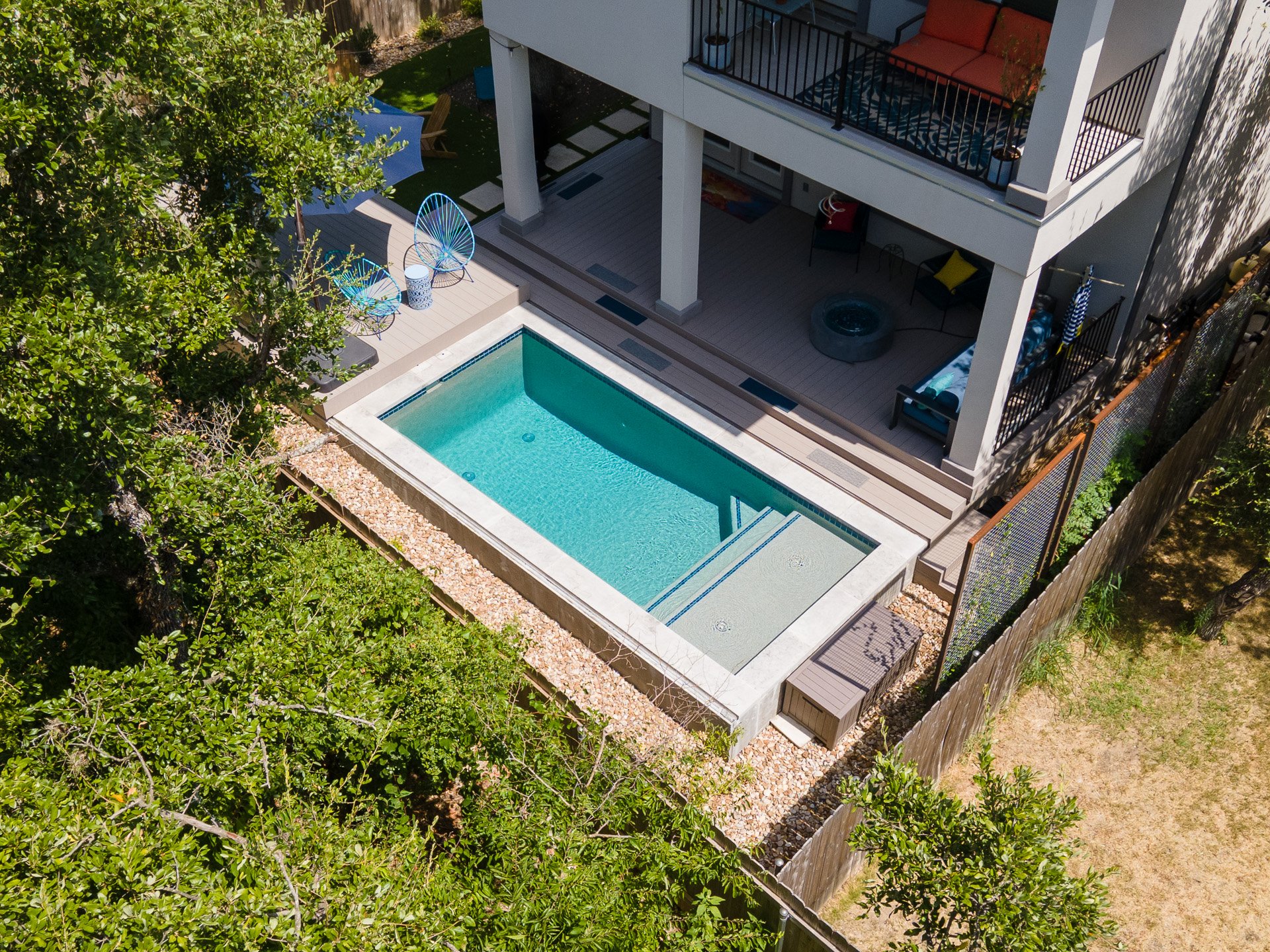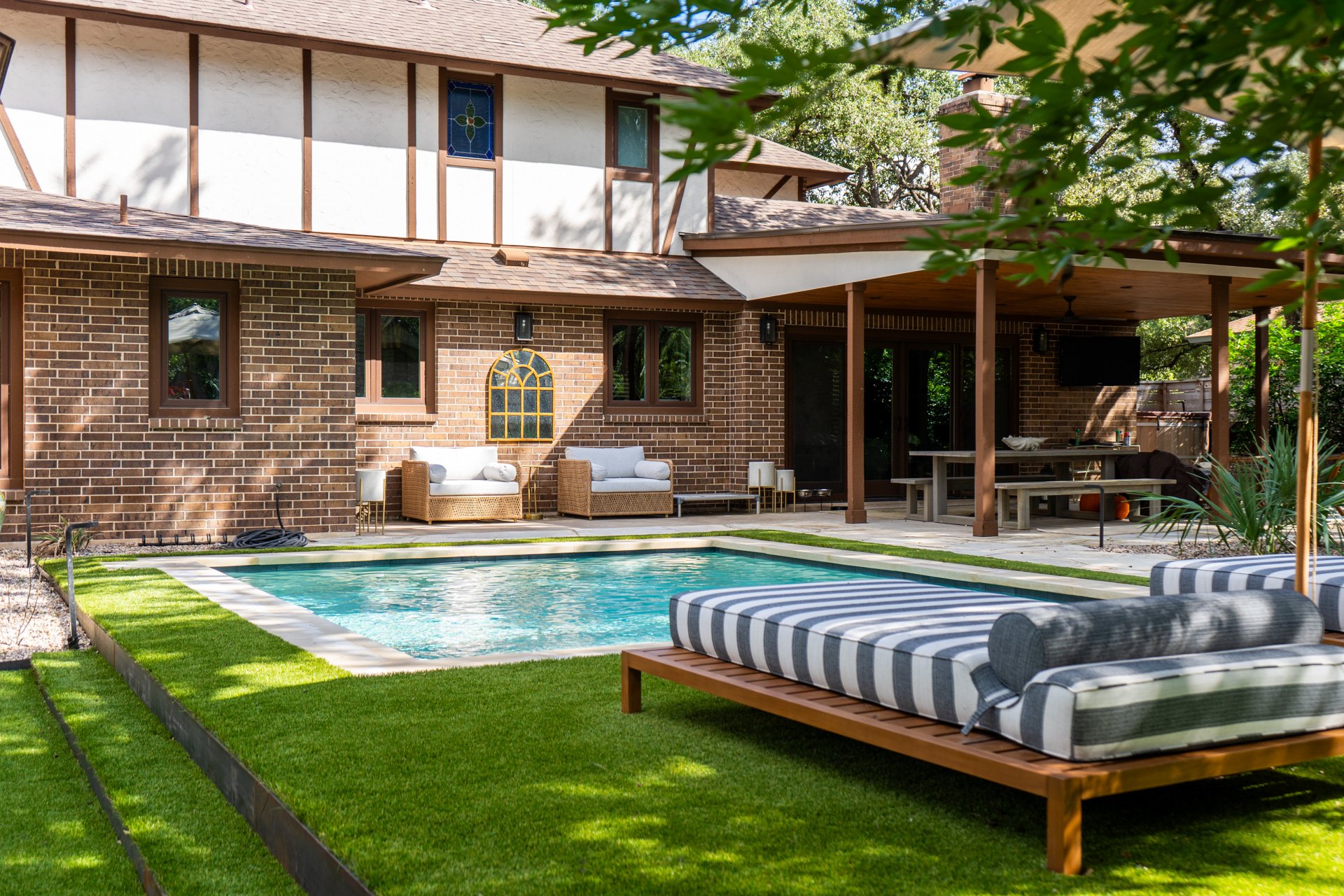Impervious Cover for Pools in the City of Austin
If you’re planning to build a Tiny Pool, understanding impervious cover in the City of Austin is essential. On urban lots within the city limits, our customers are often faced with the challenge of complying with Austin’s impervious cover requirements.
What is Impervious Cover?
Impervious cover refers to any human-made surface that doesn’t absorb rainfall. These surfaces prevent water from seeping into the ground. Here are common examples of impervious cover:
Rooftops: Your house’s roof (including covered patios and sheds).
Patios: Paved outdoor spaces.
Driveways: Both paved and unpaved.
Sidewalks: Concrete pathways, pavers, and stepping stones.
Decks: Uncovered wooden decks count as 50% impervious cover.
Why Does Impervious Cover Matter?
Excessive impervious cover can lead to stormwater runoff, which carries pollutants into our water bodies. By managing impervious cover, we protect our environment.
The City of Austin limits impervious cover for new construction and additions (including swimming pools) based on your property’s zoning. For most residential lots, impervious cover is capped at 45%, but we will let you know during our due diligence and site visit process the limits for your specific property.
How much Impervious Cover does a pool require?
It depends on the size of your pool. The pool’s coping and equipment pad counts against your impervious cover total, but the water surface does not. During our site visit, we can let you know what size pool you are able to build based on your lot’s impervious surfaces.
Reducing Impervious Cover
We love a challenge, and have lots of experience helping our clients come up with creative ways to reduce their impervious coverage in order to build a Tiny Pool.
Some examples of impervious cover reduction include, but are not limited to:
Removing walkways/sidewalks and replacing with gravel
Removing portion of driveway that is not utilized
Removing sheds, carports, old decks, and patios
Let’s Discuss Your Property
Do you still have questions about what is possible in your yard? Contact us today to start our research and site consultation process.


